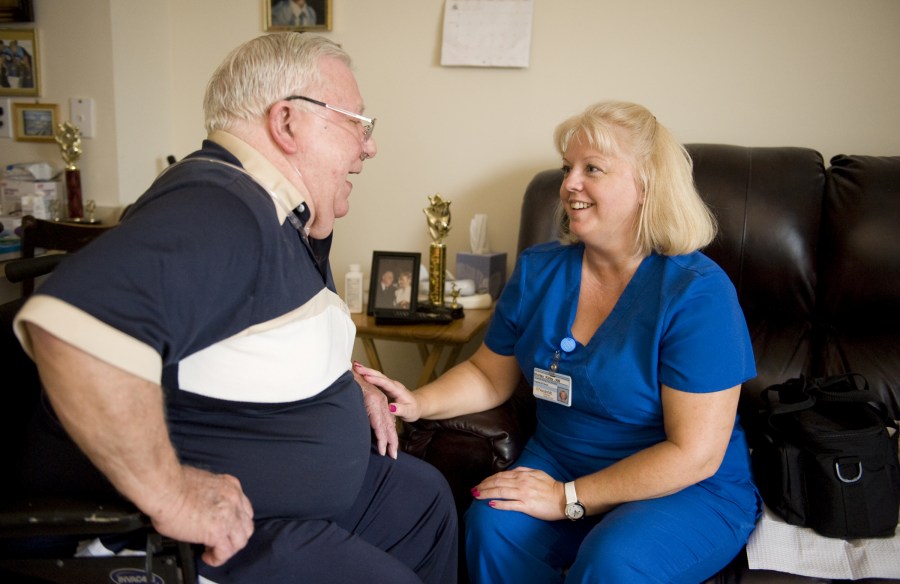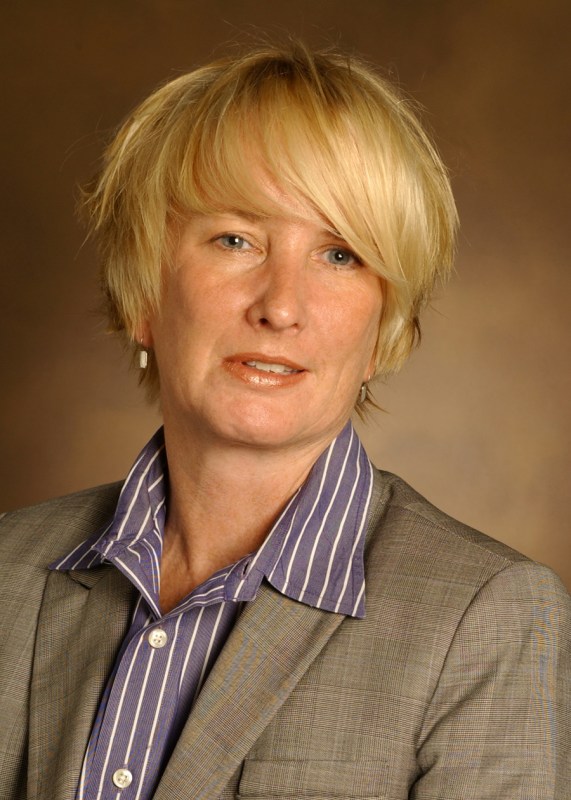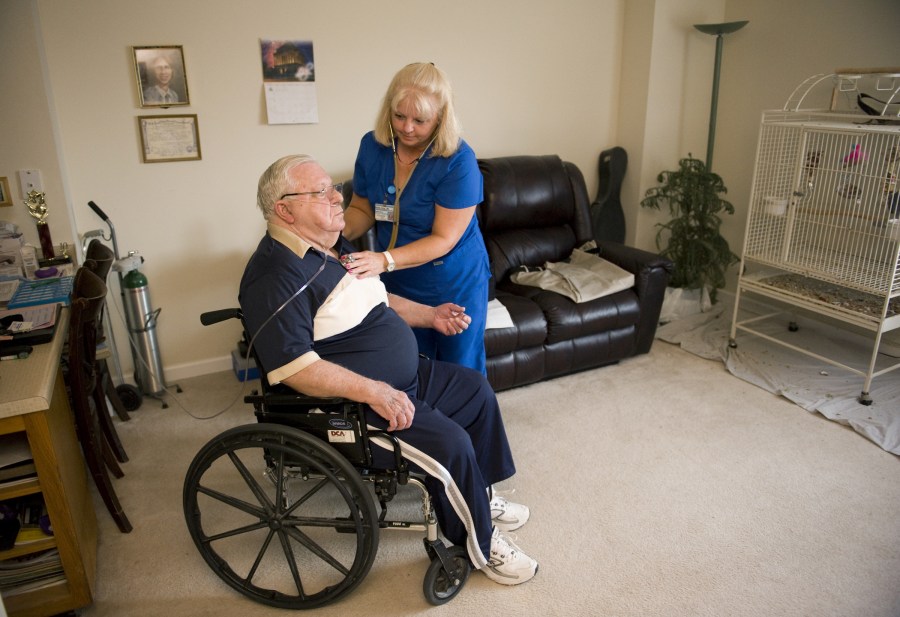
Shirley Kirby, R.N., talks with Jimmy Bean at his house in Madison during a home health care visit. (photo by Joe Howell)
‘Hospital without walls’ going strong
Laura Beth Brown, R.N., president of Vanderbilt University Medical Center's Home Care Services, has a lot to smile about.
The program she refers to as “Vanderbilt's best kept secret” is making a name for itself with quality ratings, strong outcomes, diverse service offerings, staff retention and overall program growth.

Laura Beth Brown, R.N.
For nearly three decades, the program has made more than 1.5 million visits and provided more than 1 million hours of private duty services in the home to patients ranging from neonates to centenarians. The focus for each patient is the same — providing optimum health care in a home setting and support for the family.
Brown said the key to the program's success is its integration with the larger Vanderbilt system, which provides access to extensive resources.
Vanderbilt's program offers a multi-disciplinary approach to care coordinated by the patient's physician. Services include nurse visits, physical, occupational and speech therapy, medical social work, behavioral health, home health aides/assis-tants, private duty services, sitters and office support.
The service sees about 550 patients daily. Although 70 percent of the home health patients are from Vanderbilt, physicians within the community and surrounding counties make the reminder of the patient referrals.
“We are positioned very differently than any other service in our area,” said Brown. “We have all aspects of the continuum in one system, including integrated electronic medical records. We are the only hospital-based health agency in the metropolitan service area.”
Historically, there was an abundance of hospital-based health care agencies both in Nashville and throughout the United States. But many hospitals decided to sell or close their programs.
“Either for financial reasons or perhaps the programs were no longer mission central for some organizations, hospital-based programs disappeared,” said Brown. “Vanderbilt had the foresight to see that this was ultimately going to be a critical part of the continuum of care as well as a transition of care for many patients.”
Marilyn Dubree, M.S.N., R.N., chief nursing officer for the Medical Center, serves as the chair of the program's Board of Directors. She said the value of the services cannot be underestimated.
“We know and understand that health care does not stop when the patient leaves the system,” Dubree said. “Vanderbilt Home Care was built on this premise and provides excellent care for our patients. I believe that this is a vital component today and for the future of health care at Vanderbilt.”
The program has nearly 200 employees with an average of 17 years experience per employee and a turnover rate of 9.1 percent — compared to the industry average of 24 percent. Roughly 25 percent of the professional staff have masters-level degrees.
“The fact that we are a part of an academic medical center tends to draw a different level of professional staff. No other home health agency in this area has that level of masters-prepared employees. What makes us so different from others? The difference is our employees and the depth of our resources,” Brown said.
Recently the program completed the accreditation process and not only received recommendation to the CHAP (Community Health Accreditation Program) Board of Review for reaccreditation, but also recommendation for commendation in two areas.
First, the surveyors highlighted the agency's program development initiative for its focus on separate adult and pediatric services and advisory boards.
“We are probably the leading agency in children's home care in the Middle Tennessee area,” said Brown.
The second commendation noted the inter/intra organizational alignment of the program with special regard to the exemplary level of resource utilization shown via the quarterly executive lecture series the program provides.
Other program highlights include the success of a joint venture with Walgreens to provide home infusion, respiratory care and medical equipment services.
That partnership, Vanderbilt Home Care affiliated with Walgreens Infusion and Respiratory Services, is nearing the one-year mark and has serviced an average of 150 infusion patients daily.
Home infusion therapy is a cost-effective alternative to receiving intravenous drug therapy in the hospital. Patients receive treatment in the comfort of their homes, in convenient alternate treatment sites or other non-hospital settings.
“Vanderbilt discharges about 40,000 patients a year,” said Brown. “Industry benchmarks indicate that at least 4,500 of those patients will require infusion or respiratory services.
“Before this collaboration, a patient could have had three to four different agencies coming into their home to provide care. Care was fragmented. But now we are able to provide comprehensive, continuum of care and continuity of care in an integrated system.”

Jimmy Bean didn’t have to leave his Madison home for his checkup, thanks to Shirley Kirby, R.N., and Vanderbilt Home Health Services. (photo by Joe Howell)
In recent years, the Vanderbilt program has made “remarkable strides in terms of convenience and quality of service,” said C. Wright Pinson, M.D., M.B.A., Deputy Vice Chancellor for Health Affairs.
“Home infusion and respiratory services are important recent additions,” he said. “It is my hope that all of the Vanderbilt physicians and discharge coordinators will take advantage of these high-quality, convenient and comprehensive services.”
“I have never met a patient who didn't want to be at home,” added Brown. “We are focusing every effort to meet the needs of our patients in their most supportive environment.
“I believe Home Health is a vital part of innovation in health care that addresses costs, quality and personalized care.”













